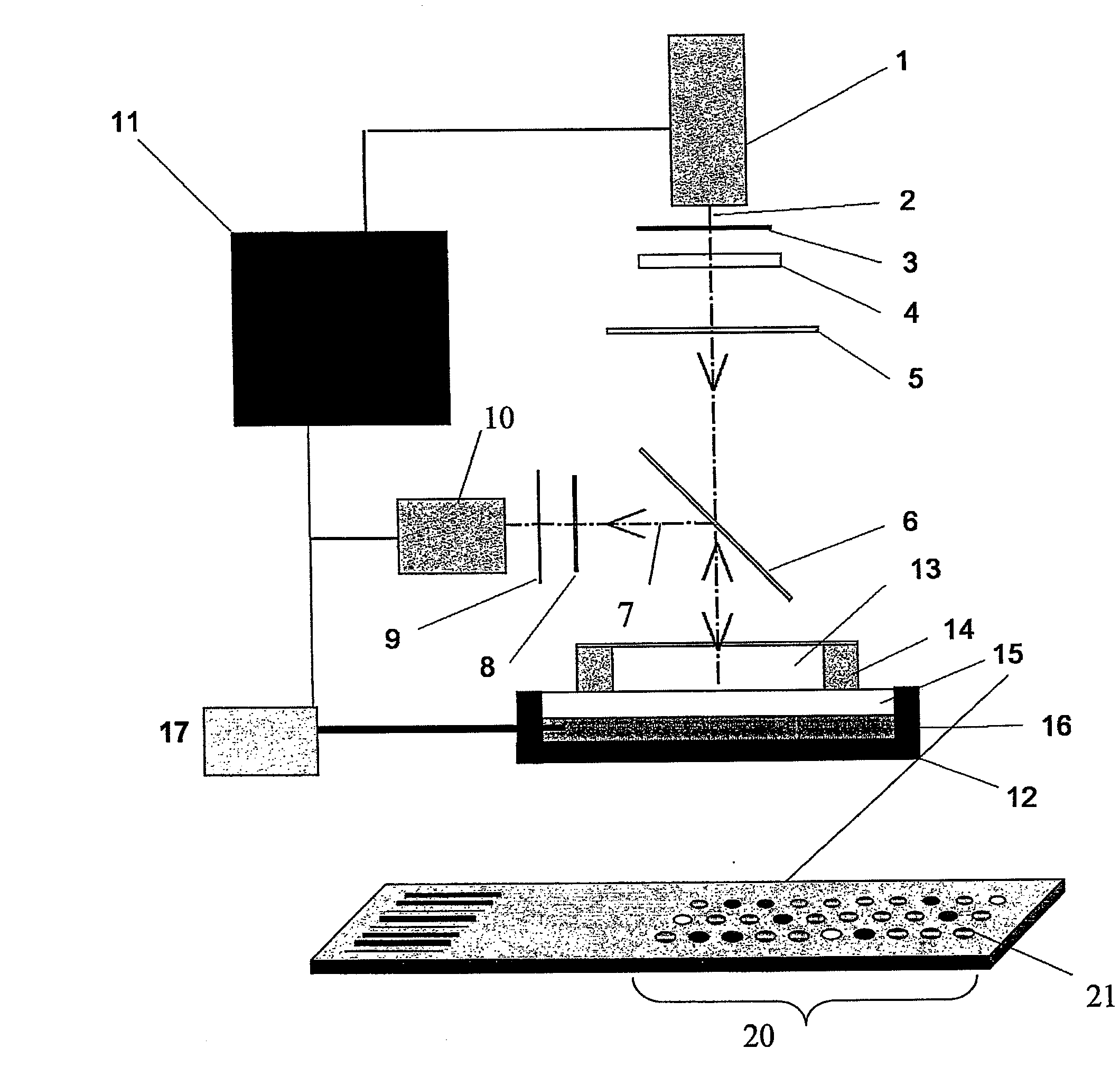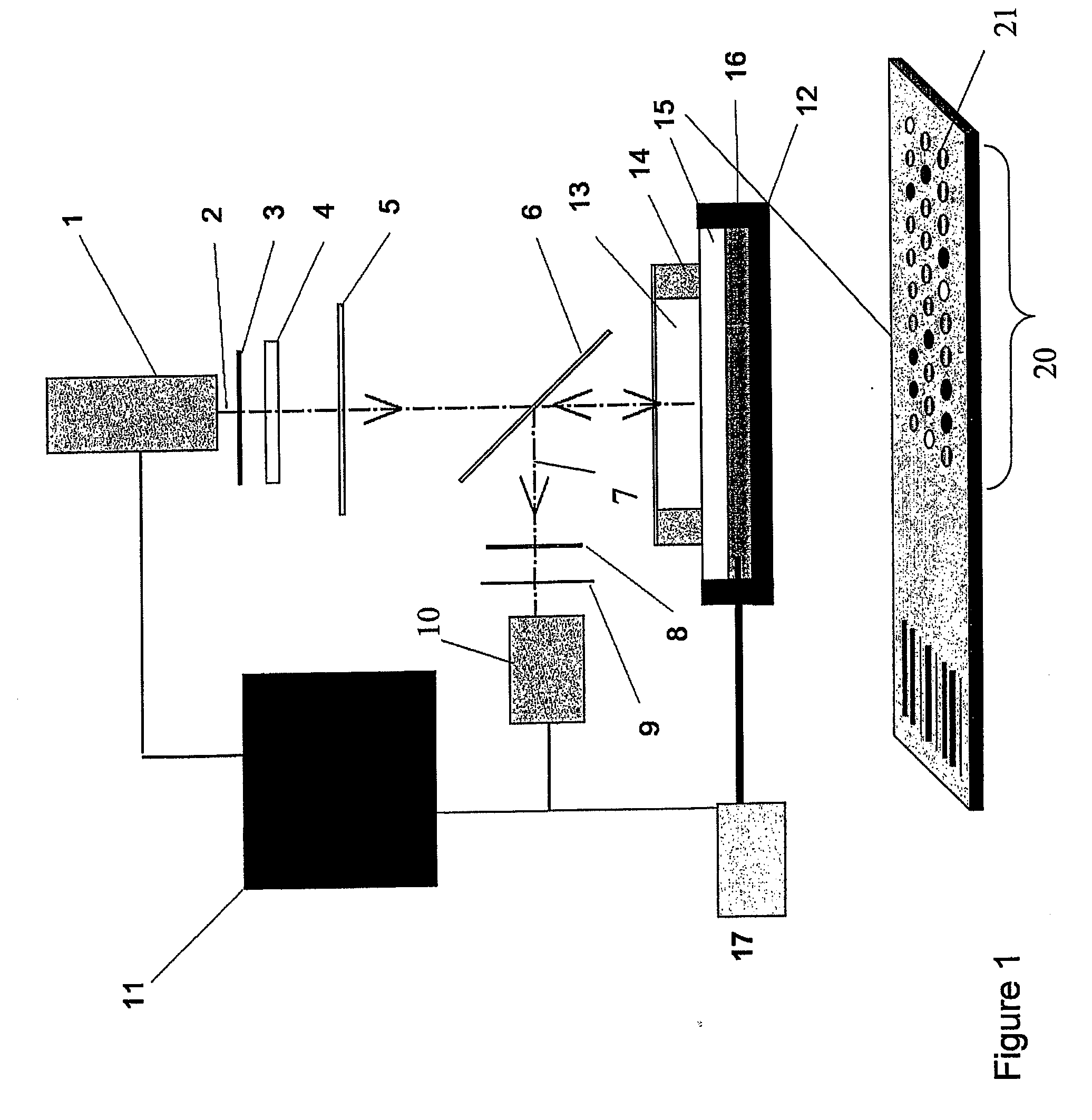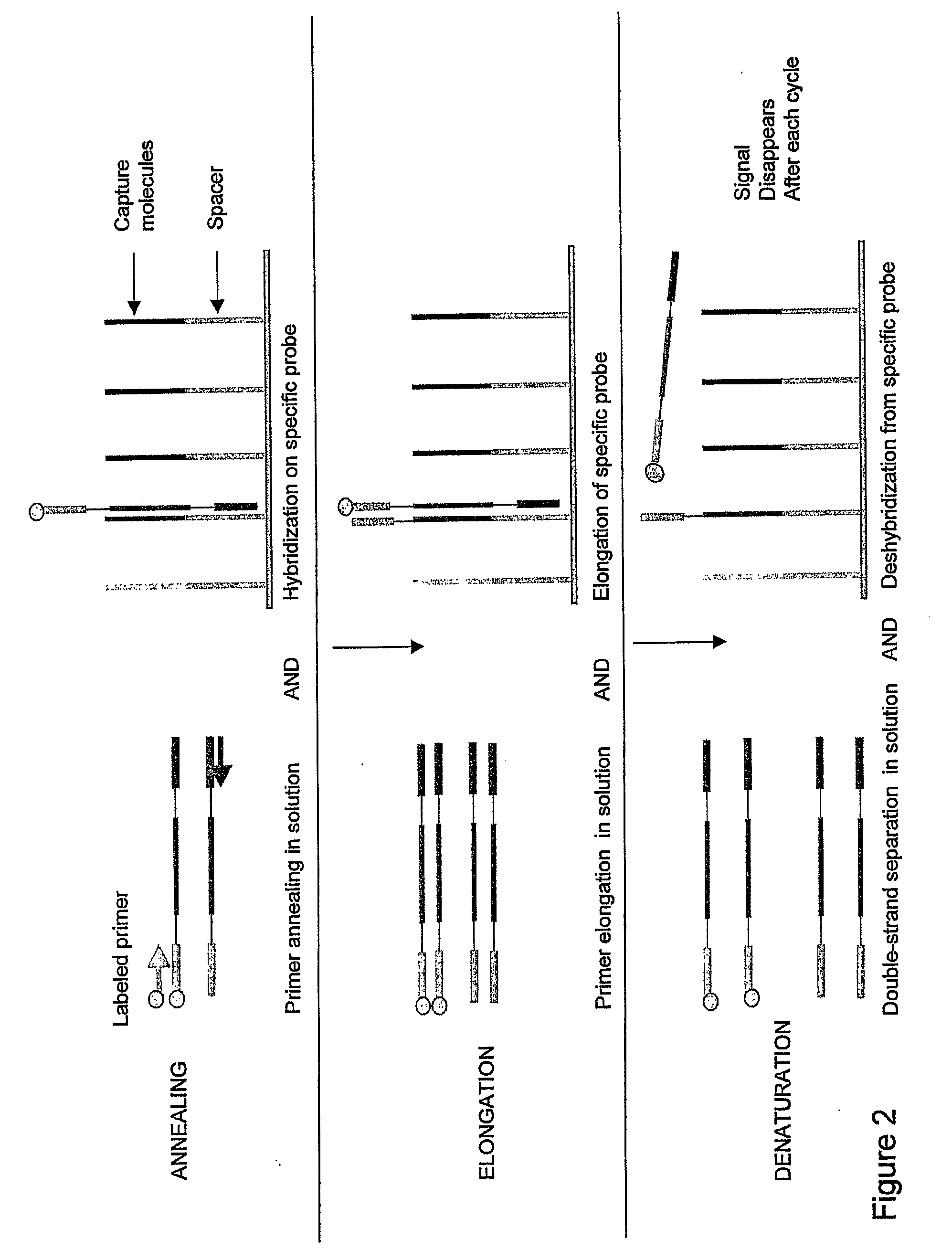Real-time PCR of targets on a micro-array
a microarray and target technology, applied in the field of real-time pcr of targets on the microarray, can solve the problems of difficult multiplexing, requiring several hours to complete, and limited to the quantification of one target nucleic acid per fluorescent dy
- Summary
- Abstract
- Description
- Claims
- Application Information
AI Technical Summary
Problems solved by technology
Method used
Image
Examples
example 1
Monitoring PCR Amplification on Micro-Array
Capture Nucleotide Sequence Immobilisation
[0152]The Diaglass slides (Eppendorf, Hamburg, Germany) are functionalized for the presence of aldehydes according to the method described in patent application WO02 / 18288. The protocol described in this patent application was followed for the grafting of aminated DNA to aldehyde derivatised glass. The aminated capture nucleotide sequences were spotted from solutions at concentrations of 3 μM. The capture nucleotide sequences were printed onto microscopic glass slides with a home made robotic device using 250 μm diameter pins. The spots have 400 μm in diameter and the volume dispensed is about 0.5 nl. Slides were dried at room temperature and stored at 4° C. until used.
[0153]The capture probes used in this experiment have the following sequences:
TP35S (SEQ ID NO:23):5′Amine- GTCATCCCTTACGTCAGTGGAGATAT -3′TGUT (PCR control) (SEQ ID NO:24):5′Amine- GGGACTGGCTGCTATTGGGCGAA -3′TPAT1 (SEQ ID NO:25):5′Ami...
PUM
| Property | Measurement | Unit |
|---|---|---|
| Length | aaaaa | aaaaa |
| Time | aaaaa | aaaaa |
| Time | aaaaa | aaaaa |
Abstract
Description
Claims
Application Information
 Login to View More
Login to View More - R&D
- Intellectual Property
- Life Sciences
- Materials
- Tech Scout
- Unparalleled Data Quality
- Higher Quality Content
- 60% Fewer Hallucinations
Browse by: Latest US Patents, China's latest patents, Technical Efficacy Thesaurus, Application Domain, Technology Topic, Popular Technical Reports.
© 2025 PatSnap. All rights reserved.Legal|Privacy policy|Modern Slavery Act Transparency Statement|Sitemap|About US| Contact US: help@patsnap.com



